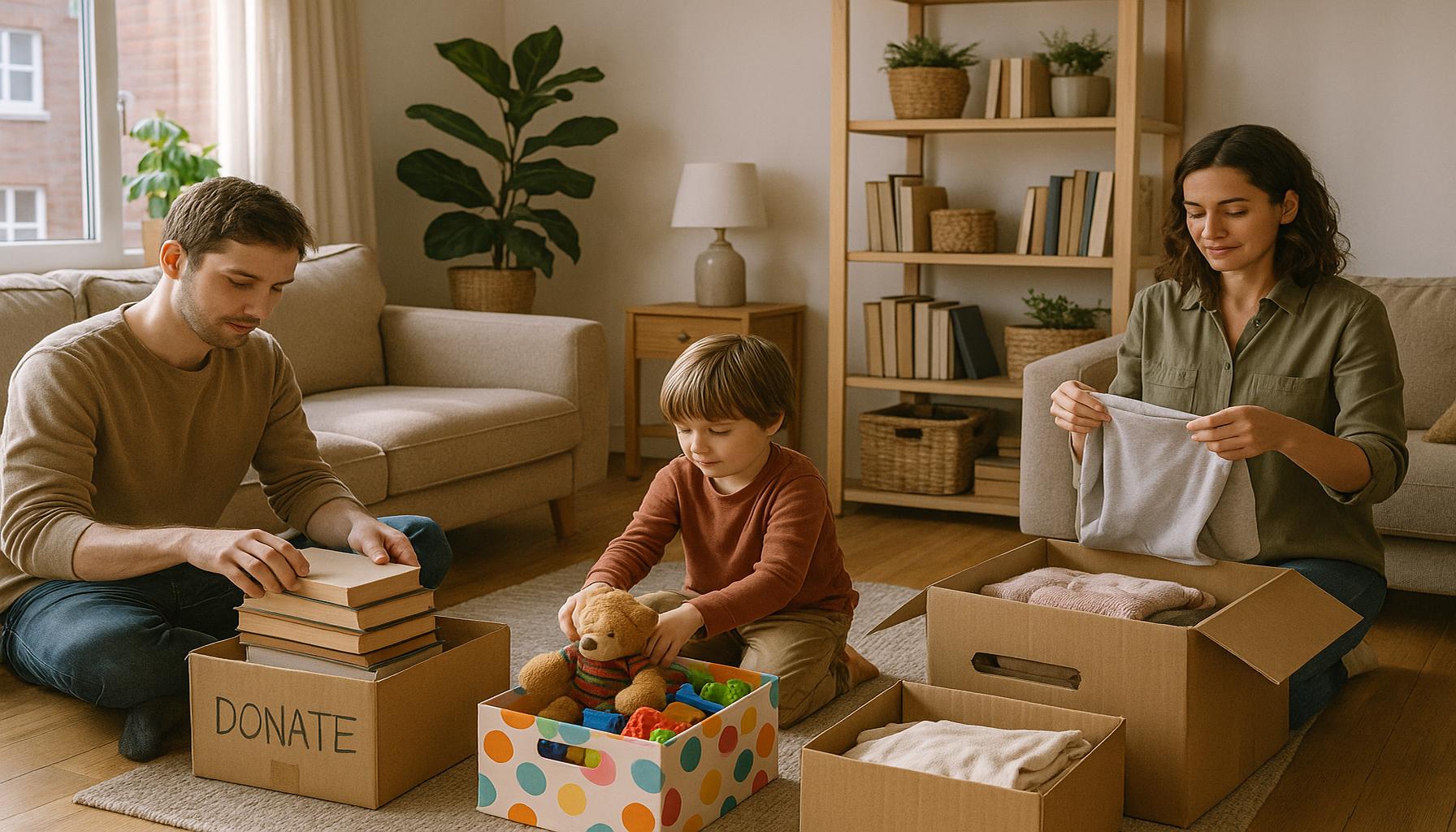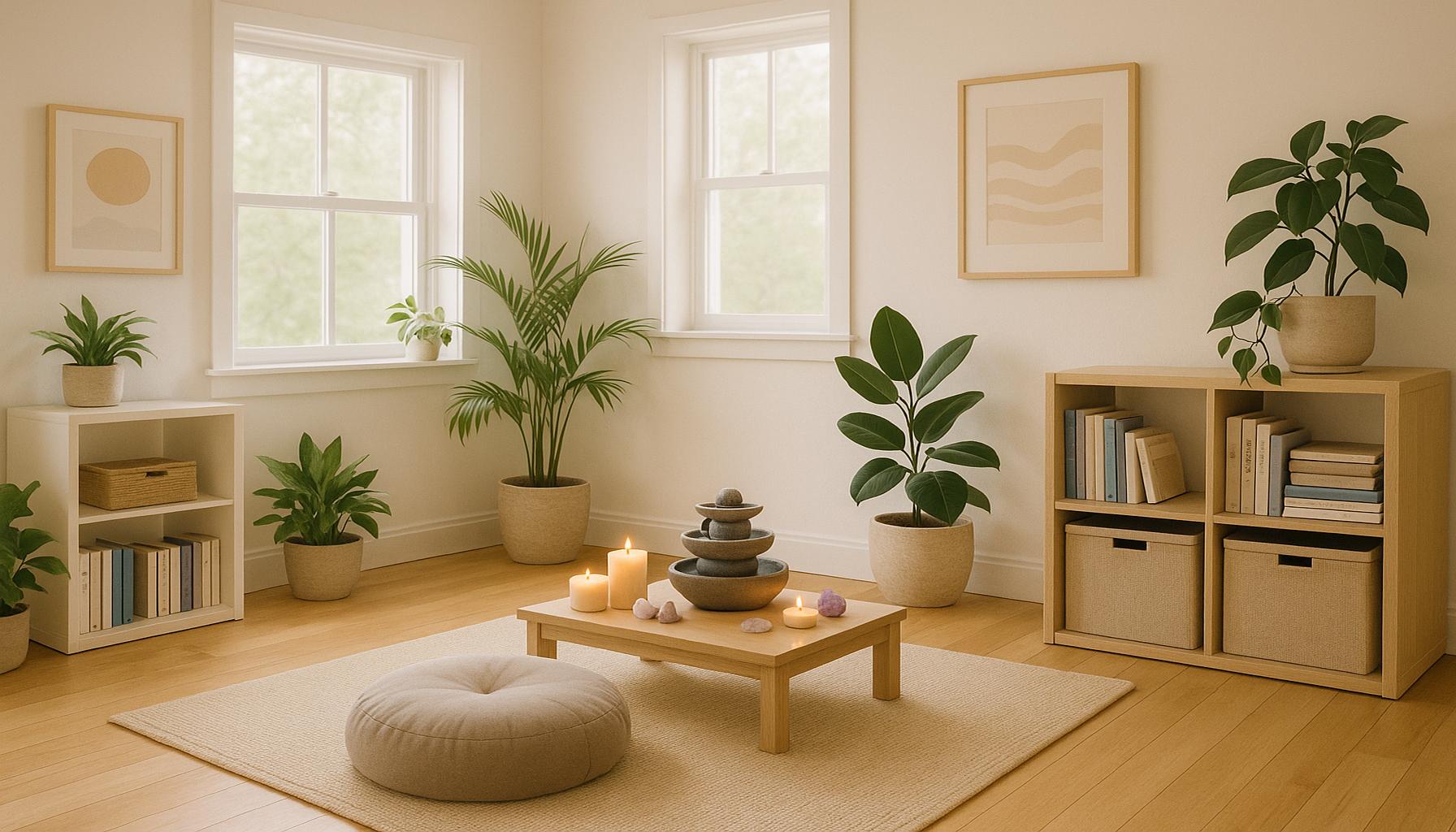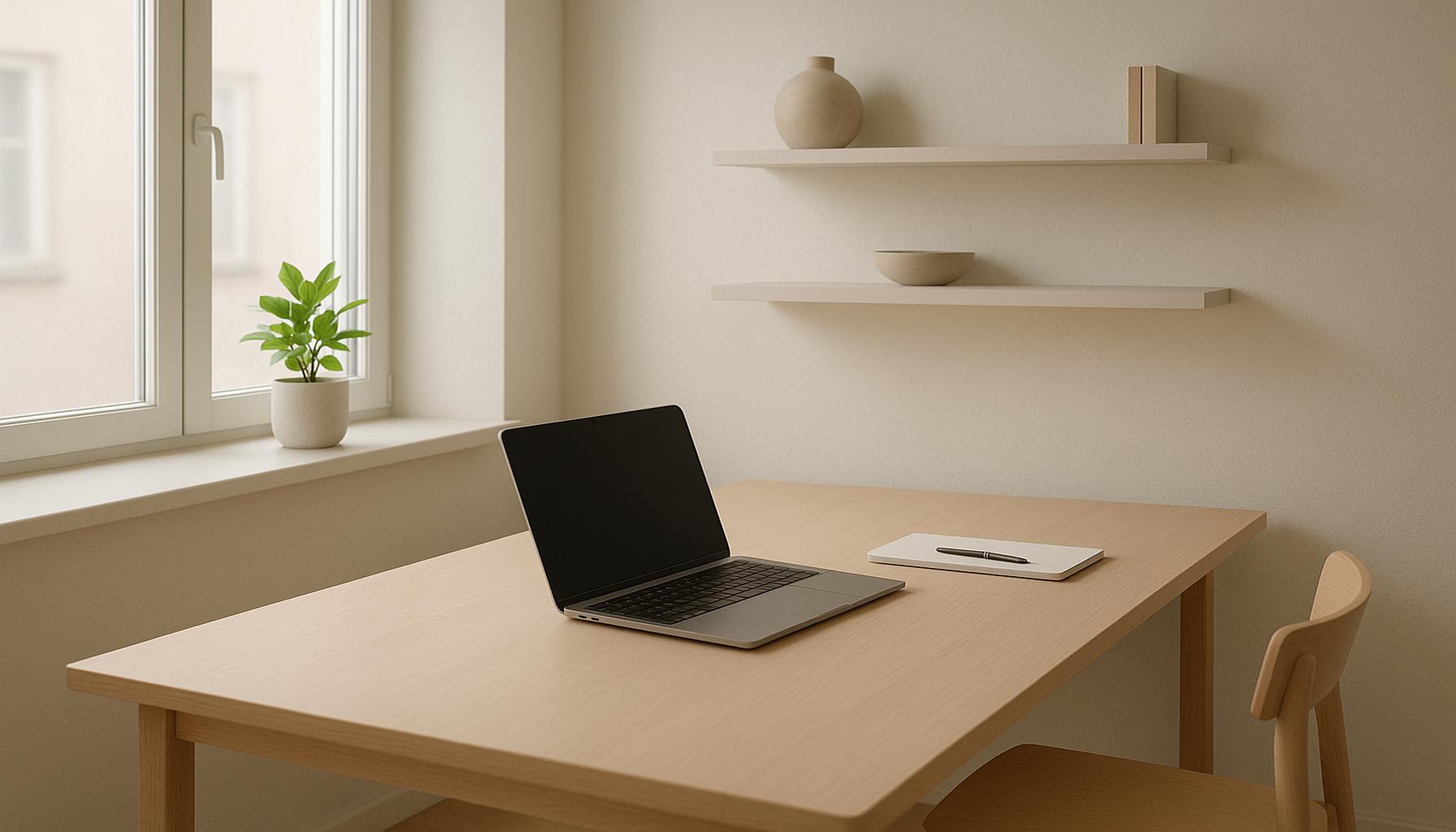Decluttering Familiar: How to Involve Everyone in the Organization of the House

Streamlining Your Home Together
Creating a harmonious living space can often feel like an overwhelming task. However, by involving the entire family in the decluttering process, you can transform not only your home but also the relationships within it. Decluttering is more than just eliminating unwanted items; it’s about fostering a sense of teamwork and shared responsibility that can resonate through familial bonds.
One of the primary benefits of dragging the whole family into decluttering endeavors is that it encourages collaboration. When members work side by side, they share ideas and strategies, which can strengthen family bonds in a way that mere conversations cannot. A parent and child might bond over memories tied to old toys, sharing stories that deepen their connection. This communal activity can foster laughter, creativity, and teamwork as they sort through cherished memories together. Additionally, it helps illuminate each person’s unique perspective on what an ideal living space should look like, reinforcing the idea that every family member’s input is valuable.
Another significant advantage is that teaching essential skills becomes inherent in the decluttering process. Children begin to absorb valuable organizational skills, learning how to categorize, prioritize, and make decisions about their belongings. For example, during a decluttering session, they might practice critical thinking by assessing which toys they use regularly and which ones have been gathering dust. This skill-building extends beyond the home; it lays the groundwork for effective self-management in their future educational and professional spheres.
Moreover, decluttering allows for the creation of a personal space tailored to individual tastes and preferences. Encouraging each family member to curate their environment means their true personalities can shine through. For instance, a teenager might want a minimalist desk setup to enhance focus on studies, while a younger sibling might prefer a colorful and vibrant space filled with their favorite cartoon characters and books. This ownership fosters pride and care for shared spaces, promoting a sense of responsibility among family members.
In the United States, many families find success by setting specific decluttering days or weekends, making it a fun event rather than a chore. Building routines around decluttering can also be beneficial. Consider these strategies:

- Establishing monthly clean-outs: Allocate a designated day each month for family decluttering sessions, perhaps pairing it with a fun reward like a picnic afterwards.
- Assigning roles: Empower each family member by giving them ownership over specific areas in the house, such as the living room, garage, or bedrooms.
- Making it a game: Set challenges to make it enjoyable for children, turning the task into a race to see who can sort through a box of belongings the fastest.
Involving everyone in the organization of the house not only leads to a cleaner environment but also encourages a culture of respect and responsibility. The memories created during these collaborative decluttering sessions can often be just as meaningful as the result itself. As you explore these strategies, you’ll discover how to make decluttering a shared adventure that creates lasting connections. By approaching this daunting task as a family, you not only cultivate a neater home but also forge deeper relationships that stand the test of time.
DISCOVER MORE: Click here to enhance your efficiency
Embracing the Decluttering Journey as a Family
Engaging the whole family in decluttering not only leads to a more organized home but also nurtures essential skills and values. For many homes in the United States, this collaborative approach can be a stepping stone towards creating a warm and inviting atmosphere while instilling important lessons about responsibility and teamwork. So, how can you ensure everyone feels included and motivated during the decluttering process? Here are several strategies that can help.
Start with Open Conversations. Before diving into decluttering, initiate discussions within the family about the significance of having a tidy home. Bring attention to how a clutter-free space can enhance productivity and improve mental health. Encourage everyone to express their thoughts on their belongings and the spaces they inhabit. An open forum can help identify which items hold sentimental value and which ones are simply taking up space. This dialogue fosters respect for each member’s perspective and can ease tensions when it comes to making difficult decisions.
Implement Family Decluttering Days. Setting aside specific days for family decluttering can turn an ordinary task into a celebratory occasion. Designate a Saturday each month as “Family Decluttering Day” where everyone gets involved. To maintain enthusiasm, reinforce this initiative with fun activities post-decluttering, such as a movie night or a special dinner. Creating a fun atmosphere can make the process feel less like a chore and more like a family bonding experience.
- Customize the Approach: Select areas or rooms to declutter based on individual family members’ interests. For younger kids, start with their playroom or bedroom, while older children may appreciate the opportunity to organize their own study spaces.
- Utilize the 4-Box Method: Equip each family member with four boxes labeled “Keep,” “Donate,” “Trash,” and “Relocate.” This method encourages decision-making. It also simplifies the sorting process as everyone can easily categorize their belongings.
- Share Accomplishments: After each decluttering session, take a moment to celebrate the progress made. Whether it’s taking a family photo of the spotless area or indulging in a favorite snack together, celebrating milestones reinforces positive behavior.
Assign Roles. To foster a sense of ownership, assign specific decluttering roles to each family member. Adults can tackle larger spaces like garages or attics, while children may find satisfaction organizing their toys or clothes. This not only divides the workload but also instills the idea that everyone contributes to maintaining a harmonious home.
Moreover, as you engage everyone in this organization process, consider involving them in the decision-making for new items brought into the home. Discuss the importance of mindful purchasing and how it relates to maintaining a clutter-free lifestyle. This practice not only nurtures responsibility but also promotes the concept of meaningful consumption.
Ultimately, involving the entire family in the decluttering process not only yields a cleaned-up home but also cultivates vital life skills. When families unite for a common purpose, they foster deeper connections and build lasting memories—proving that the journey of decluttering can be as rewarding as the destination.
| Advantages | Details |
|---|---|
| Increased Participation | Involving every family member encourages teamwork and creates a sense of ownership in the organization process. |
| Enhanced Responsibility | Assigning specific roles teaches children and adults alike about responsibility and the importance of maintaining a clean living environment. |
| Stronger Relationships | Collaborative decluttering provides opportunities for communication and bonding, making the process enjoyable and memorable. |
| Better Organization Skills | Engaging everyone helps develop practical skills for organizing, which can be beneficial in numerous aspects of life. |
| Emotional Benefits | Clear, decluttered spaces contribute to reduced stress and anxiety levels, leading to a more peaceful home environment. |
In “Decluttering Familiar: How to Involve Everyone in the Organization of the House,” the importance of fostering a collaborative environment is key. By allowing all family members to take part, you will not only create a more organized home but also strengthen family bonds. The emotional and practical benefits gained from this shared endeavor encourage lasting habits that can transform your household into a serene sanctuary. Moreover, this process highlights the value of teamwork and harmony in daily living, paving the way for a consistent commitment to cleanliness and orderliness.
DIVE DEEPER: Click here to learn how to prioritize what matters most</a
Fostering Teamwork and Accountability in the Decluttering Process
Once the family is on board with the decluttering journey, the next step is to foster teamwork and accountability to sustain motivation and create an ongoing culture of organization. Decluttering should not be viewed merely as a one-time event but rather as a lifestyle change that emphasizes responsibility and collective effort.
Create a Decluttering Schedule. Develop a regular decluttering schedule that outlines specific tasks for each family member. For example, assign different rooms or areas to tackle each week. Keeping a calendar can be helpful; visually tracking progress can provide a sense of achievement while enabling everyone to contribute at their own pace. Use this opportunity to set family goals—aim for one area to be fully decluttered each month. Over time, these goals can help build lasting habits in maintaining a clutter-free environment.
Incorporate Gamification. To heighten enthusiasm, introduce a gaming element into the decluttering process. Create small competitions within the family, such as who can declutter the most items or who can do it the quickest. Set a timer and have races to see who finishes their area first while keeping it fun. Consider creating a point system to reward contributions that could lead to a family outing or a fun treat. Gamifying the process presents decluttering as an engaging and rewarding challenge rather than a burdensome task.
Engagement Through Communication
Hold Regular Family Meetings. Organize regular family meetings where everyone can discuss their progress, share challenges, and offer support and encouragement. These meetings can serve as platforms to address any emotional attachments to belongings and facilitate open discussion about the necessity of decluttering. This practice ensures that everyone has a voice, promoting inclusivity and enhancing the decision-making process as a family.
Maintain an Ongoing Relationship with Items. Encourage family members to evaluate their items regularly, especially after holidays or birthdays when new items are often received. Instill the “one in, one out” rule, which suggests that for every new item brought into the house, an old one must be donated or disposed of. This philosophy not only simplifies ongoing organization but also nurtures gratitude and mindful consumption among family members, reinforcing the importance of valuing possessions.
Encouraging Reflection and Growth
Promote Reflection on Belongings. Teach the family to ask critical questions about their belongings: “Do I use this? Does it bring me joy?” Encouraging reflection promotes greater discernment when it comes to holding onto items. Each family member can have a “reflection session” where they reevaluate their space and the items within it. This can be done on a quarterly basis to maintain a clutter-free environment.
Involve the Younger Generation. When involving children, be sure to educate them about the environmental impact of clutter. Discuss topics such as recycling, donating to local charities, or supporting community organizations like Goodwill or The Salvation Army. Understanding the broader implications of their choices can empower children to actively participate in the decluttering process, making the experience impactful and meaningful.
When families come together with an organized and collaborative spirit, decluttering can evolve into a family tradition filled with valuable lessons, deeper connections, and a sense of shared purpose. The potential to create lasting memories through this collective effort cannot be discounted as every family member plays a vital role in cultivating a serene living space.
DIVE DEEPER: Click here to discover essential tips
Conclusion: Embracing a Collaborative Decluttering Journey
In conclusion, embarking on a decluttering journey as a family is not merely about organizing physical spaces, but rather about cultivating a shared commitment to maintaining a harmonious living environment. By engaging everyone—from young children to adults—in the process, families can foster a sense of teamwork and responsibility, transforming decluttering into a positive and unifying experience.
Establishing a structured decluttering schedule, incorporating elements of fun and friendly competition, and holding regular family meetings helps create an atmosphere of inclusivity and motivation. Moreover, teaching family members to consistently evaluate their belongings encourages them to develop mindfulness about consumption, fueling both gratitude and intention in what they choose to keep or let go. The practice of implementing rules like “one in, one out” further embeds sustainability into family routines.
As families navigate through this collective task, they not only create a clutter-free home but also build lasting memories and deeper connections along the way. The lessons learned during this journey can extend beyond the home, reflecting on how we value and relate to our possessions. Embrace this opportunity to instill values of organization, responsibility, and teamwork across generations, paving the way for a serene living space—one that truly resonates with the ideals of comfort and functionality.
Ultimately, the success of decluttering together lies in viewing it as an ongoing lifestyle choice that prioritizes communication, engagement, and growth for the entire family. Start today and explore how involving everyone can lead to a brighter, more organized future.


